From: http://www.shs.nebo.edu/Museum/lambourne.html
Alfred Edward Lambourne was born in England on River Lambourne on February 2, 1850, Caroline "Carrie" Lambourne Romney's younger brother.[ New research shows that Carrie and Alfred have the same father but different mothers. Carrie is the daughter of Diana Simms, Alfred is the son of Martha Wernham.]. Alfred was the first of ten children by Martha, and four children by Diana (and two from her previous marriage).
Alfred's parents [William Lambourne II and Martha Wernham Lambourne (daughter of George and Diana Wernham), both of Chieveley, Berkshire, England] encouraged his artistic talents while he was young, and when the family converted to the LDS faith and moved to the United States, Lambourne's experience as a romantic realist painter of the western landscape began.
As a youth, Lambourne lived in St. Louis until his family migrated to Salt Lake City in 1866 (Haseltine, 42). During the trek west, Lambourne kept a sketchbook of the scenery along the way. After the family's arrival in Utah, Alfred began painting scenes for the Salt Lake Theater Company; he was just 16. Although he had some informal instruction from J. Guido Methua, George Tirrell, and Henry D. Tryon, Lambourne was primarily self-taught (42). He had an original approach to landscape painting and was capable of depicting moonlight and sunset scenes with an air of mysticism.
Alfred liked solitary rambles in the mountains. It was he who explored and named the Cottonwood lakes above Salt Lake City...Martha Lake for his mother, Minnie Lake for his wife, and Lillian Lake for his daughter.
His parents remained Mormons, and though he remained in good fellowship with the Saints, he had no religious affiliation until late in life when he associated himself with the Unitarian movement in Salt Lake City.
Like other landscape painters of his time, he often accompanied expeditions to unmapped territories. He was with local photographer Charles R. Savage on a month-long tour of southern Utah in the 1870's. In 1871, he was the first artist to sketch Zion Canyon while accompanying the Brigham Young party as it explored that area.
In 1876, he collaborated with Reuben Kirkham on a landscape panorama entitled Across the Continent (1876) which is composed of 60 panels and includes a long view of the Salt Lake Valley. This display was based on their travels from the eastern coast of the United States to the Golden Gate of the Pacific. The completed panorama toured throughout the region. Lambourne and Kirkham successfully charged settlers a small admission fee to view their efforts. They later worked together on a similar project on an expedition to Zion Canyon
In 1877 Alfred Lambourne married Wilhelmine "Minnie" Marie Williamson, the widow of Mr. Osterhout. She brought her children Luke Osterhout (b. 1865) and Nettie Osterhout with her from Norway.
By the 1880's Lambourne was well-known for his work. He was one of the first artists to visit and paint Yellowstone, the Grand Canyon, and Yosemite. In 1883 he painted Great Salt Cliffs at Promontory Lake. Other paintings include Black Rock Great Salt Lake (1890), Summer (1921), and Winter (1924). Two of his easel paintings Hill Cumorah and Adam-Ohndi-Ahman are in the Salt Lake Temple of the Church of Jesus Christ of Latter-day Saints.
The two paintings by Lambourne in the Utah State Fine Art Collection are Lake Blanch, Wasatch Mountains and Morning in the Uintah Mountains expressing his interest in the beauty of the Wasatch mountain range.
Lambourne's content and painting style was that of the "Rocky Mountain School" which was similar in style and philosophy to the Hudson River School of the East. Similar to Thomas Moran, Albert Bierstadt, and Thomas Cole, Lambourne was a painter of new and often unexplored territories. "It is said that explorers of the time did not claim discoveries in an area until they ascertained whether Lambourne had already painted there." (Dictionary of Utah Artists, 277).
By the 1890's. Lambourne became very interested in being a writer. He wrote a total of 14 books, two of which he illustrated.
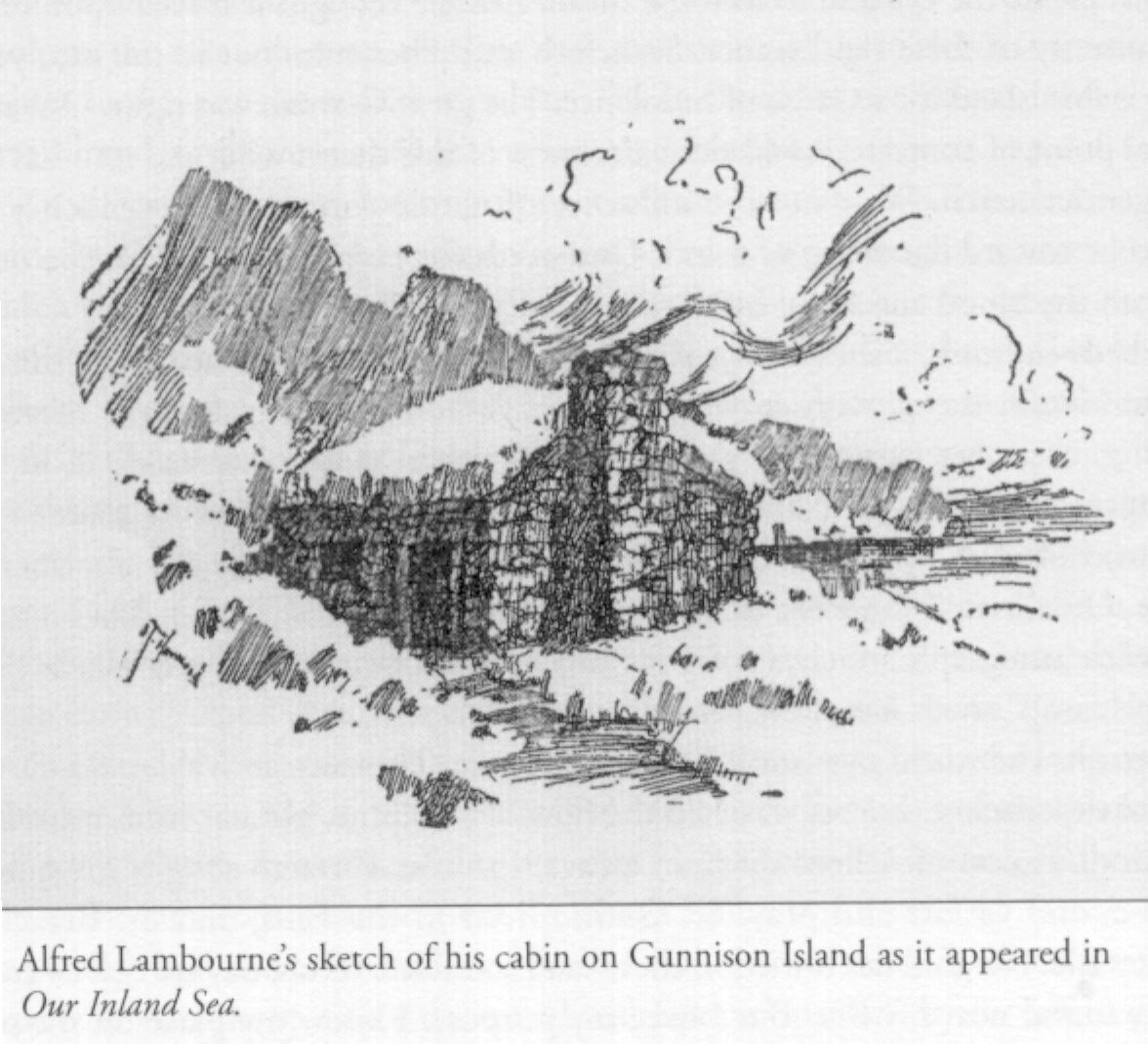
Also during the 1870s, Lambourne traveled with Charles R. Savage, the famous nineteenth-century photographer. Later that same decade, he traveled and painted with his friend Reuben Kirkham. Together they produced a landscape panorama that was similar to C. C. A. Christensen's and Samuel Jepperson's. The idea of a panoramic show was popular and appealing to Utahns of the nineteenth century. The large size of Lambourne's paintings reflected the grandeur of the United States. Kirkham and Lambourne traveled with 60 panels entitled "Across the Continent" (1876) , including a 25-foot long view of the Salt Lake Valley (Utah Art, 25).
By the 1880s, Lambourne was well known for his painting abilities. He was one of the first artists to visit and paint Yellowstone, the Grand Canyon, and Yosemite and was quickly gaining commissions. In 1800, collector J.R. Walker had Lambourne paint Moonlight„ Silver Lake, Cottonwood Canyon (1880). The picture depicts two figures in a boat and features dramatic changes in value and a heavy atmosphere. Also during the 80s, Lambourne began writing poetry to express his feelings on nature and Utah. Lambourne reported that the "lonely solemnity of Utah's scenery moved him" (Utah Art, 36).
Around this time the Great Salt Lake first enwrapped Alfred in its spell. Adam Patterson took him in his yacht, the Maud, to Antelope Island. On horseback Lambourne rode along the island's western highlands, and the infinitely varied mood of the lake, with the lonely magnificence of its far shores, filled him with a restless desire to sail the lake and sketch it, capture in water colors and oils the quality of its mingled desolation and beauty. In June1887 he found a man kindred in his love of the lake, David L. Davis was a yachtsman, not an artist. Innumerable happy cruises were made together in Davis' catamaran, the Cambria. Gunnison Island, in the far northwestern part of the lake began to fill his mind as an image, the unattainable that might somehow be sought out. It was his dream of perfect solitude. Later in the summer of 1887, Davis and Alfred sailed north into a moment of true magnificence. In the waste of waters, as the golden greay sunset gave way to the early stars, he felt an over powering sense of solitude. On the far horizon a purple speck no bigger than a boy's top. Darkness closed down the vision. He could barely describe his excitement as they sailed in those remarkable hours between the evening and morning twilight, while the water reeled in their wake like a mountain torrent. "How like a dream it was to be out there on the face of that mysterious sea! How like a dream to be moving in the deep midnight toward the shadows of its unknown shores! Every sight and sound had in it something of wonder or beauty."
The sky was blazing with morning when they reached the island. Lambourne leaped ashore, shouting, answered by a scream from the myriad birds. "Not in our circumnavigation of the lake, " he wrote, "had we looked upon another scene half as picturesque as that, nor one whose sombre features were enlived with such a multitude of noisy life. Every hour of our stay at this island was filled with the echoes of a ceaseless din." of clamorous seagulls and stolid pelicans. Could this be reminiscent of a home with fifteen siblings?
In November 1895 he decided to homestead Gunnison Island. He was forty five, with a wife and four children (three others had died in infancy). How was such a man justified in seeking out a solitude withing his own soul? Answer: He would homestead the island. The Homestead Act required a continuous residence for 14 months. He would make a vineyard, a long family tradition. His friends carried him north to the bleak island that filled his heart. They helped him build a small, massive hut, its low, thick walls formed an untrimmed slabs of stone taken from the cliff by which the hut stood, its roof earth-covered, its chimney starting from the ground, almost as big as the hut itself. Within was a table, a rack formed from the skull of a mountain sheep, with curved and massive horns, a bin and the means for cooking, an easel and a piano encased in dark mahogany. There were shelves of books, a Navajo blanket. Over the whole a lamp hung from a chain.
With him he had brought two dogs and had the company of a large black raven, who he named Devil. The months of hermit existence ended in March 1896. His friends arrived to bring him news of the world. The island had become important and guano gatherers commenced building a house not a hundred yards from his home. He lived there for fourteen months. He had something to say to himself, something overflowing with meaning: "This Place is Mine!" "Under certain conditions a place becomes part of us; we own it. We absorb it into our lives. It cannot be taken from us; It is ours, and without title or deed. We are associated with a certain spot of earth; we have our lives shaped by it; or if that be not the case, we stamp the place with our individuality."
His friends loaded his things onto their boat and carried him to Salt Lake City where on February 9, 1897 he filed his application for Homestead Right No. 12592, covering 78.35 acres, the northern part of the island. The total island area of 155.06 acres, the railroad and the State School Section claimed the remainder. But the guano miners filed suit to void his application on the grounds that the land was mineral rather than agricultural. For a few hopeless months he fought in the courts for his vines and his 14 months of island labor but he had not the money for a long court fight. On August 7, 1897 he formally relinquished his application and the way was cleared for patenting of the island by mineral claims.
In 1902 he published a slender volume, Pictures of an Inland Sea, illustrated with some of his own paintings but essentially the story of his homestead venture. About 1908, five years after the Lucin Cutoff was completed, he visited the island again, and the year following expanded his book in a final form as Our Inland Sea. It was the Southern Pacific launch, the Augusta, that carried him back to the island for the last time. It was not the same. The door of his hut stood open, the guano sifter's cabin was empty. His vines were dead. Not a stem or shoot of his hope had lived. As he stepped aboard, he saw near the boat's prow a drowing butterfly. Its extended bright blue wings quivered convulsively as it drifted, helpless, on the brine.
Alfred found that his brush alone was not adequate to his necessities, and he felt a need for the communication of words. The need grew upon him as the years went by, and by the end of his life he had all but abandoned the brush for the pen.
In January 1884, he wrote an essay contrasting the visual arts and literature, and by the 90's, Lambourne almost exclusively preferred the pen to the paintbrush. He wrote a total of 14 books, some of which he illustrated with black and white tempera paintings. Of the few easel paintings he did produce, several were hung in the Salt Lake temple in 1992, including one of the Hill Cumorah and one of Adam-Ondi-Ahman. His work was on display at the Utah capital building and in the conference room of the Utah Historical Society.
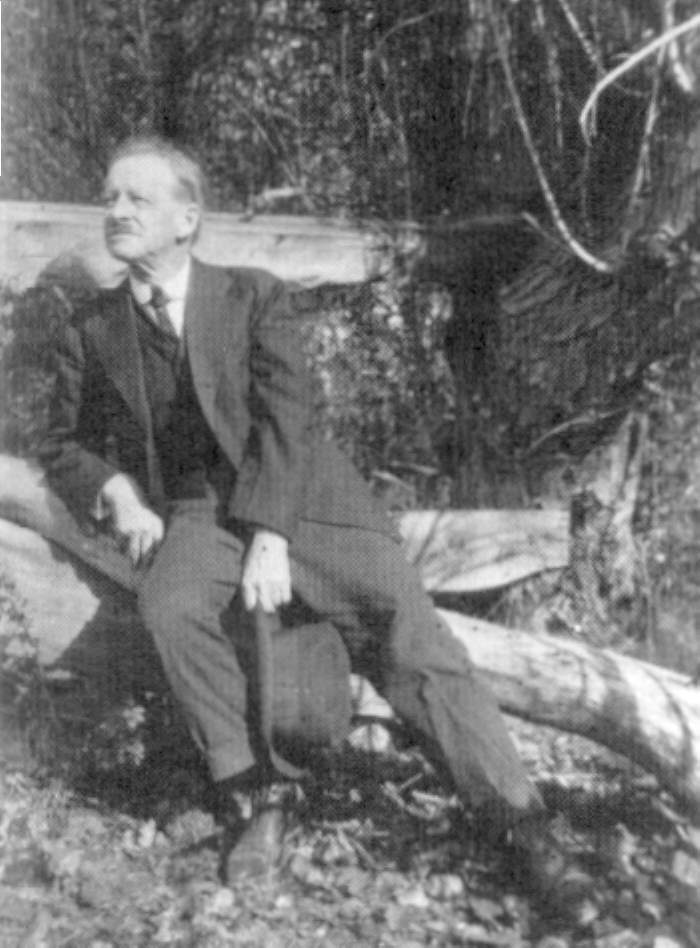
Lambourne was of a shy disposition, modest, reticent and uncommunicative, he unbent only to his intimate friends, to them he was a man of singularly lovable character, with a keenly analytical mind and an astonishing fund of information. When he died, on June 6, 1926, in Salt Lake City, it was said of him that pursuit of material wealth or the attainment of prominence through books or pictures seemed always farthest from his purpose; he lived in a world of his own making, a world of dreams and ideals, a true Bohemian. . He had been a painter, writer, explorer, and lover of nature. He was described as a man "of ability if not genius" (Utah Art 20).
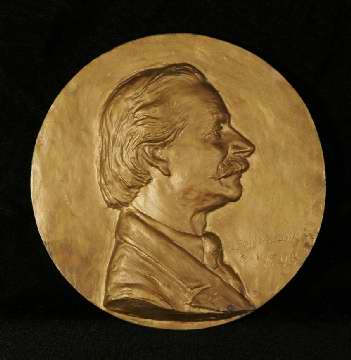
Alfred Lambourne cast image courtesy of the St. George Art Museum
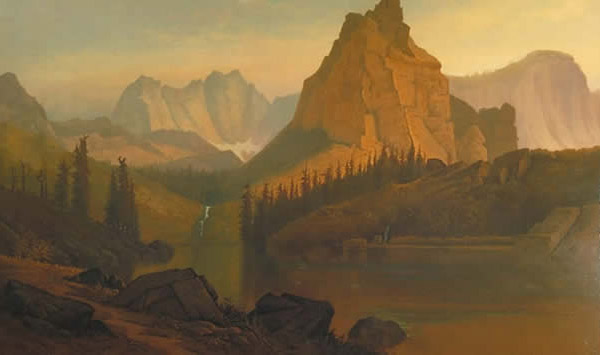 Lake Blanch, Wasatch Mountains, 1886. Oil on canvas. 30 7/8 x 50 7/8
Lake Blanch, Wasatch Mountains, 1886. Oil on canvas. 30 7/8 x 50 7/8
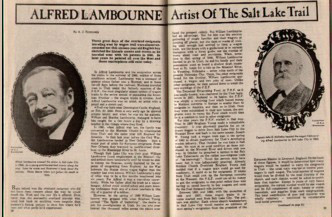

Children of Alfred Lambourne and Wilhelmine Marie Williamson
1
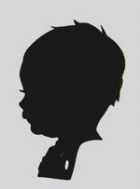
Alfred Clarence Lambourne
Born: 2 Aug 1878 in Salt Lake City, Salt Lake, Utah
Infant
Died: 7 August 1879 in Salt Lake City, Salt Lake , Utah

|
2

Name
Born:
Married:
Died:

|
3

Franklin Lambourne
Born: 11 November 1882 in Salt Lake City, Salt Lake, Utah
Married:
Died: after 6 June 1926

|
4

Frederick Lambourne
Born: 4 September 1885 in Salt Lake City, Salt Lake, Utah
Infant - twin
Died: 4 September 1885, Salt Lake City, Salt Lake, Utah

|
5

Lillian Ethel Lambourne
Born: 4 Sep 1885 - twin to Frederick
Married:
Died:

|
6

Edith Julia Lambourne
Born: 4 July 1887 in Salt Lake City, Salt Lake, Utah
Infant
Died: 5 July 1888 in Salt Lake City, Salt Lake, Utah

|
Sources:
PAF - Archer files = Orson Pratt Brown + Martha Diana Romney < Miles Park Romney + (2) Caroline "Carrie" Lambourne < William Lambourne + Diana Simms : William Lambourne + Martha Wernham > son Alfred Edward Lambourne, Caroline's half- brother.
Alfred's brother, Ernest Alonzo Lambourne, married Gerda Belle Weiler < Joseph Weiler + Mary Adelaide Adelia Chaffin > Jacob Malin Weiler is Gerda's brother. Jacob Malin Weiler is Nellie Weiler Brown's brother. http://www.shs.nebo.edu/Museum/lambourne.htm
The Improvement Era, January 1910, Vol. XIII, No. 3, pages 232-233.
The Improvement Era, March 1910, Vol. XIII, No. 5, pages 392-393, 746-747.
"The Old Journey" by Alfred Lambourne
"Shores of an Inland Sea" See Western Galaxy, March 1888
"A Glimpse of Great Salt Lake" 1890. Pamphlet published by the Union Pacific Railroad.. Revised as a Gift book in 1895
"Pictures of an Inland Sea" by Alfred Lambourne, 1902.
"Our Inland Sea" by Alfred Lambourne, 1908
"Great Salt Lake: An Anthology" Edited by Gary Topping. Utah State University Press, 2002.
"The Great Salt Lake" by Dale Lowell Morgan. Foreword by Harold Schindler. University of Utah Press. 1947 and 1995. Pages 337-347.
http://www.sgcity.org/arts/collection/exhibit1/e10113b.htm
Copyright 2003 www.OrsonPrattBrown.org
|